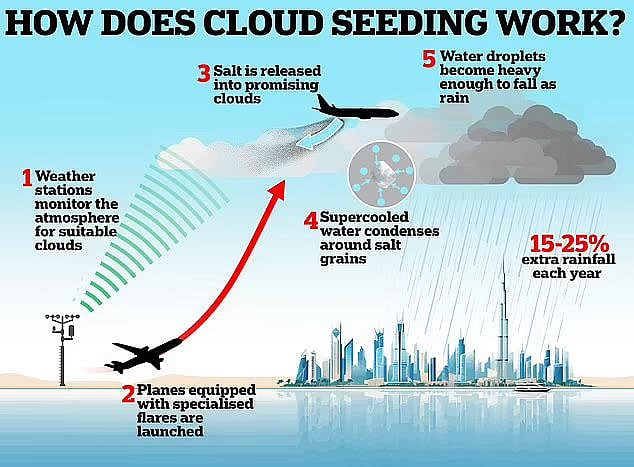Explained: What Is Cloud Seeding? Delhi To Witness Its First Artificial Rain On Oct 29 Amid Efforts To Tackle 'Severe' Post-Diwali Air Pollution
New Delhi: In an unprecedented step to combat the city's worsening air quality, the Delhi government is preparing to conduct its first-ever artificial rain experiment on October 29 through cloud seeding.
The initiative, led by IIT Kanpur and coordinated with IMD Pune, aims to trigger rainfall that could help cleanse the city's polluted atmosphere following Diwali celebrations.
Here's what the government has planned:
Announcing the project, Environment Minister Majinder Singh Sirsa said the Rs 3.21 crore initiative will use modified Cessna aircraft to disperse a scientifically prepared mixture of silver iodine nanoparticles, iodised salt, and rock salt into moisture-laden clouds over northwest and outer Delhi.
The goal is to induce rainfall by stimulating cloud condensation and promoting the coalescence of water droplets.
The operation, which reportedly spanned from July 4 to 11 for trial sorties, covered about 100 square kilometres per flight, lasting around 90 minutes. The Delhi government has confirmed that if favourable cloud conditions persist, the first artificial rainfall will take place on October 29, with additional windows on October 28 and 30.
Delhi Chief Minister Rekha Gupta said experts had already conducted a successful test in the Burari area. “Preparations have been completed to induce artificial rain through cloud seeding for the first time in Delhi. Today, experts have successfully tested in the Burari area,” she said on X.
Calling it “historic from a technical perspective,” Gupta added that the initiative aimed to establish a scientific method to combat pollution and restore balance to Delhi’s environment.
What is Artificial Rain?
Artificial rain, commonly referred to as cloud seeding, is a weather modification technique designed to enhance rainfall by stimulating condensation in clouds. The process involves dispersing certain chemicals such as silver iodide, potassium iodide, or dry ice into clouds. These agents act as nuclei that attract water vapour, encouraging the formation of raindrops.

The technique is carried out by using aircraft or ground-based generators that release these particles into clouds containing sufficient moisture. Once the moisture condenses and droplets grow heavy enough, precipitation occurs. Cloud seeding is not a method of “creating” rain from nothing; it only enhances rainfall potential in existing clouds.
Globally, cloud seeding has been used in several countries including China and the United Arab Emirates to address drought, improve air quality, and supplement water resources. Its success, however, depends largely on atmospheric conditions such as humidity, temperature, and cloud type.
Does Delhi Need It, and Will It Work?
Delhi has been recording ‘poor’ to ‘severe’ air quality levels in several parts of the city after Diwali. On Friday morning, Anand Vihar registered an AQI of 402, categorised as ‘severe’, while RK Puram and ITO stood at 316, in the ‘very poor’ range. The Central Pollution Control Board (CPCB) data shows that air quality around AIIMS and Dwarka Sector 8 remained ‘poor’, with readings of 295 and 292 respectively.
The CPCB classifies AQI levels between 0–50 as ‘good’, 51–100 ‘satisfactory’, 101–200 ‘moderate’, 201–300 ‘poor’, 301–400 ‘very poor’, and 401–500 ‘severe’. The government says that artificial rain will temporarily bring relief by washing away pollutants and reducing particulate matter concentration in the air.
Experts, however, caution that while artificial rain may offer short-term respite, it is not a permanent solution. The effectiveness of cloud seeding is unpredictable and depends entirely on suitable meteorological conditions. Without adequate cloud moisture, rainfall cannot be triggered.
Additionally, environmental scientists have pointed potential risks associated with repeated cloud seeding, including chemical residue accumulation in soil and water bodies. Despite these concerns, the experiment represents a scientific effort to explore new tools for urban pollution management.
If successful, Delhi’s artificial rain initiative could serve as a model for other Indian cities struggling with extreme air pollution.
news